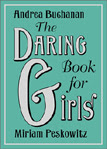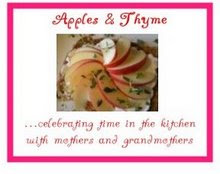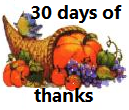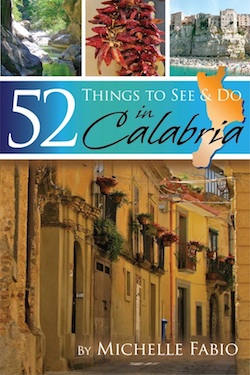Archive for 2007
The Daring Book for Girls

Today my blog is one of the stops on MotherTalk.com’s Blog Tour for The Daring Book for Girls by MotherTalk founders Andrea J. Buchanan & Miriam Peskowitz.
The Daring Book for Girls; Andrea J. Buchanan & Miriam Peskowitz; ISBN 978-0-06-147257-2, HarperCollins Publishers (October 30, 2007); hardcover; 280 pp.
 Four words can easily sum up how I feel about The Daring Book for Girls:
Four words can easily sum up how I feel about The Daring Book for Girls:
I LOVE THIS BOOK.
Now let me take you back to the day when I received it in the mail. I opened the package and saw what looked like an old school textbook: uber-retro from the electric blue hardcover to the throwback font.
And then I noticed the glitter, and right then I knew this was no ordinary “Here’s what to do on a rainy afternoon with your little girl” book.
I opened it up to find even more of the retro style through font choice and drawings, which I just loved. It transported me right back to my childhood, surely one of the book’s goals, and that was before I even got to reading all the good stuff inside.
The Daring Book for Girls is meant to be a manual full of the things that young girls should know; it’s set up in quick, easy to read chapters, perfect for you or the young girl in your life to pick up whenever the mood strikes and always find something interesting.
Now lest you think we’re talking about how to press flowers, making knots and stitches, how to throw a good slumber party (complete with Bloody Mary and Light as a Feather!), and putting your hair up with a pencil–although all of these are in the book too–some other subjects include: building a campfire, tree swings, how to negotiate a salary, watercolor painting, and finance (interest, stocks, and bonds).
For the athletically-inclined, there are sections on hiking, yoga, paddling a canoe, softball, roller skating, bowling, karate, climbing, and hopscotch from around the world. For the more smartypants-inclined, there are math tricks, words to impress, Greek and Latin root words, and a list of “books that will change your life.”
Interspersed throughout this trip down memory lane are history lessons (“What is the Bill of Rights?”) and stories of famous and notable women (among which are Amelia Earhart, Joan of Arc, and a five part series on Queens of the Ancient World), which make this book a fairly complete reference book full of information as well as things to do.
The Daring Book for Girls is 280 pages of fun–a one-stop guide of what the young girl in your life needs to know and how you can teach her.
I have to admit that at first I felt a little guilty getting this book to review when I don’t have any daughters (yet, hopefully), but I quickly realized that’s not a prerequisite to enjoying it. This is a great book even for those of who simply want to take a walk through more innocent times, to remember what it felt like to be out on the corner playing Chinese Jump Rope or doing cartwheels with the neighborhood kids.
And if you don’t remember the words to some of those handclap game ditties? You just might find them here. “Miss Mary Mack, Mack, Mack, all dressed in black, black, black….”
Oh, and some of us might even still find the section on boys particularly useful.
And so, with my first ever 5 espresso cups out of 5 rating, I wholeheartedly recommend this book to anyone with a special little girl around, who wants a great reference book of what a young girl’s childhood should be about, and/or who would simply love to reminisce with the help of Buchanan and Peskowitz.
It is so comforting to know that all of the silly, innocent fun that I experienced as a child isn’t gone forever; indeed it’s in this book.
Today I am thankful for:
The awesome memories that surfaced while looking through this book, such as:
- endless games of hopscotch, jump rope (Chinese and regular), and handclap games I played with my cousins and the neighborhood kids;
- what it was like when I first started to seek out books to read on my own;
- building forts in the living room with the couch cushions and lots of blankets;
- all of the paintings, drawings, and other art projects that helped pass many rainy days;
- playing football on the baseball field in the winter snow;
- exploring in the woods and picking up anything that struck my fancy from arrowheads to pretty rocks to blueberries.
Those *were* the days.
What are some of your fondest childhood memories?
P.S. I’m posting this from an internet cafe but at least I saw a rainbow on the way.
—————
[tags]the daring book for girls, books, book reviews, childhood memories, nablopomo, 30 days of thanks[/tags]
for writers who need inspiration (and who among us doesn’t?)
Fellow writer and friend Fango of Bici Vecchia: An Errant in Italy recently sent me a link to an excerpt of award-winning author Wendell Berry’s The Art of the Commonplace.
In a word? Wow.
There is so much good stuff in this piece, I’d love to parse it out and offer my thoughts for discussion here periodically.
Unfortunately, right now all I can manage is the aforementioned “wow,” but I’m working on a more intelligent response, I promise.
I did want to share one particular section, though, as I and thousands of others are trying our darnedest to write 50,000 words in November for NaNoWriMo. Watch my progress in the sidebar, by the way.
So, to my fellow writers whether NaNo-ing or not, I offer the words of Berry:
At first glance, writing may seem not nearly so much an art of the body as, say, dancing or gardening or carpentry. And yet language is the most intimately physical of all the artistic means. We have it palpably in our mouths; it is our langue, our tongue. Writing it, we shape it with our hands. Reading aloud what we have written–as we must do, if we are writing carefully–our language passes in at the eyes, out at the mouth, in at the ears; the words are immersed and steeped in the senses of the body before they make sense in the mind. They cannot make sense in the mind until they have made sense in the body. Does shaping one’s words with one’s own hand impart character and quality to them, as does speaking them with one’s own tongue to the satisfaction of one’s own ear? There is no way to prove that it does. On the other hand, there is no way to prove that it does not, and I believe that it does.
I told you. Wow.
Write on writers!
Today I’m thankful for:
Inspiration. Whether it’s an article or book recommended by a friend, another blogger’s gorgeous writing, wagging puppy tails, or just plain old glorious sunshine, inspiration abounds, and I find myself typing, typing, typing away on my NaNo novel. I’m actually up to 11, 313 words (and I’m not finished yet tonight!), but I can’t get onto my template to update.
Woohoo!
Who knows what I’ll have when I’m done, but at least it’s more than I had on October 31.
P.S. Sadly, my internet connection is even worse than it was before. Hanging on by a thread here, thus the lack of a “30 Days of Thanks” graphic and link [edited: they’ve now been added!] *and* the post just after midnight–I’m playing it safe just in case I lose the whole connection overnight.
Telecom Italia tells me it’ll be back to normal Monday or Tuesday. Wish us luck!
—————
[tags] inspiration, wendell berry, the art of the commonplace, nanowrimo, nablopomo, 30 days of thanks[/tags]
giving thanks, and that’s about it
Well we knew it couldn’t last. I’m sorry to report that my internet connection is looking quite sad right now.
We had a huge storm overnight, but it’s been sunny and lovely (if windy and cold) all morning and I had been using the internet just fine up until about a half hour ago. Don’t know why it’s suddenly gone awry, but since I don’t know how much longer it’ll be running at all, I’m going to post as quickly as possible so as not to forfeit the day without a fight. Then I’ll hope for the best.
Today I’m thankful for:
My internet connection. Trying to look on the positive here–it could be out altogether instead of just being really, really slow. Mah.
But seriously…for the past nine days I’ve been writing a post and then a related “thankful” item. Today it’s all about thanks, so I’ll simply give a list of things I’m thankful for.
*Each link is now clickable!*
Domino by Van Morrison
being “in cahoots” with someone
Young Mother in the Grotto by Auguste Rodin
“that information…really would’ve been more useful to me YESTERDAY!”
little plastic football helmets from vending machines
sharing the newspaper with someone
laughing so hard your face hurts
Hopefully I shall see you on the morrow my friends!
—————
[tags]favorite things, nablopomo, 30 days of thanks[/tags]
Apples & Thyme: Celebrating Time in the Kitchen with Mothers & Grandmothers
When I first read that fellow bloggers at African Vanielje and The Passionate Palate were hosting a tribute to mothers and grandmothers in the kitchen, I knew I’d have to participate.
Like many women who love to cook and bake, I’ve been taught, guided, and inspired by the women who have come before me, namely my mother and paternal grandmother.
I’m not sure how closely I’m playing by the rules, but here is my entry for:
 Let’s get one thing straight from the get-go: Everything I’ve learned about cooking and baking, I’ve learned from my mother and grandmother.
Let’s get one thing straight from the get-go: Everything I’ve learned about cooking and baking, I’ve learned from my mother and grandmother.
First and foremost, I’m talking about recipes, of course. I’ve already featured plenty of the best handed down to me from my mother and/or grandmother (click on the photo to go to the recipe):
Italian Wedding Soup:
The World’s Moistest Chocolate Cake:
Breaded Veal Cutlets:
Ham and Cabbage Soup:
Louise’s Banana Cake:
But as anyone who has ever dabbled in the kitchen knows, cooking and baking are about more than just recipes. I credit my grandmother and mother with teaching me the basics–what heat to use, how often I need to stir, why garlic should be added after onion. These things came from watching the pros at work.
And truth be told, I never really cooked or baked alongside either of them with any regularity; like many masters, they worked best alone, but every now and again, I helped make gnocchi (forked ‘em to make the grooves), mixed meatballs (loved getting my hands gooey), and measured out ingredients for baking (I always was anal).
But what I did most was watch and learn. It may surprise you to know that I never did much cooking or baking at home; I really only started experimenting and getting a feel for the kitchen after I moved out on my own. But when I needed information, experience, and guidance, some things that had been instilled in me from an early age rose to the surface.
And what really sticks with me, each and every time I step into the kitchen, are two major things that I apparently learned by osmosis as they were never stated.
The first is that you need to have confidence in what you’re doing. If you’re constantly second-guessing, you’ll be too nervous to really get into a groove and to let your tastebuds take over, and that lack of confidence will show in the dish.
I learned to cook by trial and error–and many phone calls to my grandmother and mother even with the recipe in hand, but I always had in my mind the mental picture of the women in my life ruling, absolutely commanding, their kitchens. Somehow that seeped in, and gave me confidence as well.
No, things don’t always come out perfectly, but practice definitely helps, and you can’t be afraid to get in the kitchen, get to work, and get comfortable. It gets easier.
And the second lesson? Make it with love. Everything tastes better when you put your passion, your emotions, your love into whatever you’re making, and this transcends food. No matter what you’re doing, if you do it with enthusiasm, it’ll come out better. No going through the motions here–believe me, you’ll taste it.
Both my grandmother and mother always prepared food the same way no matter who was eating the food–whether it was just themselves or upwards of thirty people. And I could always taste the love.
I am so thankful for the lessons I learned in the kitchen from my grandmother and mother as they have most certainly made me the cook and baker I am today–not the best, not the worst, but definitely someone with a sense of confidence, adventure, and joy in my favorite room of the house. And while we’re talking about thankful:
Today I’m thankful for:
The wonderful women in my family, particularly my mother and grandmother, although there are many others. My mother is without a doubt my best friend, and I still go to pick up the phone and call my grandmother every now and again even though she passed away six years ago last month.
The bonds we share with other women are always special, but I’ve been so lucky to have such precious relationships within my own family; I know not everyone has that, and I am extremely thankful that I have been so blessed.
Reminder:
You still have time to write up your Apples & Thyme tribute (deadline is tomorrow!), so go to African Vanielje or The Passionate Palate for details.
—————
[tags]apples & thyme, mothers, grandmothers, cooking, nablopomo, 30 days of thanks, recipes[/tags]
Murder and Xenophobia: Troubled Times in Italy
[UPDATED AS NOTED BELOW]
I don’t know even know where to begin to write this post and I don’t know where it’ll end up, but I feel like I should so here it goes. I hope you’ll stick with me.
The murder of 21-year-old British exchange student Meredith Kercher in Perugia has thoroughly shaken Italy and England, judging from the coverage it has gotten in British press. And rightfully so. Accidents abroad happen all the time, but murder? And yes, murder is always horrible, but in this case, the suspects make it even more troublesome–especially as none appear to have had any history of violence.
Kercher was stabbed in the neck after, police say, she resisted a sexual attack that in some way involved her American roommate, 20-year-old Amanda Knox, a student at the University of Washington also studying abroad, Knox’s Italian boyfriend Raffaele Sollecito, a 24-year-old son of a urologist from Bari, and Patrick Lumumba, a 37-year-old married Congolese immigrant who runs the bar where Knox worked.
The details are murky at this point, but it’s been widely reported that Knox “confessed” to having some role in the killing; from statements leaked by Italian police, Knox said that while Kercher and Lumumba were in Kercher’s room, she stayed in the kitchen and covered her ears when she heard what were surely Kercher’s last screams. Sollecito’s statements have been all over the place, but he insists that he was at home the night of the murder.
[EDITED: Thanks to information from Steve Huff of The True Crime Weblog, Lumumba apparently now says he has an alibi and wasn’t even at the scene of the crime, making this an even stranger story.]
What it sounds like to me is that these three are telling conflicting stories and no one really knows what to believe. It looks like we’ll just have to wait this one out, possibly for forensic evidence to tell what really happened.
And while we mourn the loss of Kercher, who was studying at Perugia’s famous Università per Stranieri (just as our own Tina of Pecorino e Miele did), there is another fascinating aspect to this case from a cultural standpoint–the focus on the online presence of Knox.
Like many her age, Knox kept a MySpace (username “Foxy Knoxy”) and Facebook page, and there’s also a YouTube video of a drunk Knox slurring her words, and, well, being a young adult. Particularly interesting, though, is that on her MySpace blog, Knox apparently wrote a story about rape.
[EDITED: Courtesy of Steve Huff’s blog, you can find “mirrors” of Knox’s MySpace page here and of her blog here; both of the original pages have been made private.]
So here’s another question in all of this–how much should this online information matter? I’m not talking about from a legal perspective, but in the court of public opinion, is this fair? Is anything you put online fair game? Should it be?
The Seattle Post-Intelligencer has a great debate on this very subject: “Are we being fair?”
For me, I think if you put the information out there, you can’t stop people from looking unless you make it private. You also can’t control their opinions. Would I want to live my life censoring myself just on the off chance that one day something could be used against me? Well geez, just about anything can be taken out of context anyway, so even censoring myself wouldn’t be foolproof.
Drunk videos? Well that’s something else entirely. I say if you’d be embarrassed for your mom, dad, employer, insert other authority figure here to see it, don’t post it. But teenagers (and adults!) don’t often think that far ahead, do they? But they should.
A short story about rape? I’m a writer, so should I avoid touchy subjects just in case I’m ever in the wrong place at the wrong time (not insinuating this is what happened to Knox)? Well that I can’t accept.
It’s an interesting question, and I’d love to know what you think.
*
Now, shifting gears, but still taking off from the Kercher murder–on the Italian side of things, one can’t miss the irony that right now on the heels of a murder allegedly committed by a Romanian immigrant from the Roma (“gypsy”) community, Italian lawmakers would like to be able to expel any dangerous EU citizen, although the targets are clearly immigrants from new EU members like Romania.
Read what other terrible things have happened, including a Roma camp being torn down and a mob attack, here.
Just yesterday, Italian and Romanian leaders met to ask for help from the EU in dealing with large population movements, but only time will tell just how xenophobic Italy can and will get. For many of us in the expat community particularly, we’ve noted how poorly immigrants are portrayed in the Italian media — often the only crimes you’ll see on a newscast are those committed by foreigners.
And by “foreigners,” I mean mostly Albanians, Romanians, and Africans.
Maybe it’s something about coming from countries such as the United States, England, Australia, etc., that have, after many struggles, (mostly) embraced immigrants, but for a lot of us, all we’re seeing is prejudice and hate. To be sure, all of the above-mentioned countries have immigration issues too, but what’s happening now in Italy is so deeply disturbing, and I don’t think I’m alone in feeling this.
There are ways of regulating immigration without resorting to sweeping generalizations about countries and their citizens, and I can only hope that the Italian government will explore them.
Virtually every ethnicity/race that has entered a foreign country has encountered prejudice and worse — we Americans don’t need to go too far into our history to stare the Jim Crow South in the face — but for Italians, for my adopted country, to participate in similar behavior just breaks my heart.
And I can’t help but think of the 11 Italians who were lynched in New Orleans in 1891 in one of America’s largest mass lynchings–after they had been acquitted of the murder of the New Orleans’ police commissioner.
And I just wonder where the prejudice and hate will stop.
Today I’m thankful for:
The safety and well-being of myself and my loved ones.
There’s nothing I’m more thankful for, in fact.



















